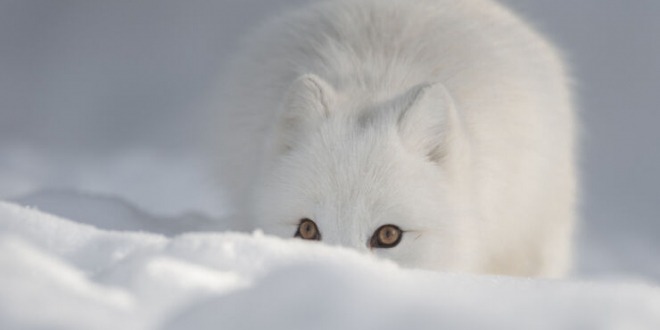As a result of global warming, many species will become extinct. A mathematical model created at Linköping University in Sweden and published in Nature Communications predicts this. Climate change will have a particularly substantial influence on ecosystems in polar regions, according to the simulations, matching changes currently visible in nature.
What impact will climate change have on the Earth’s ecosystems? Simulations using advanced mathematical models are one technique to obtain insight into this. Linköping University (LiU) researchers have devised a model that considers an extremely large number of variables.
Species that reside in different parts of the world have developed adaptations to the climate in their respective regions. When a species is faced with climate change that results in a rise in temperature, it has three options: relocate, adapt, or die extinct. The researchers used a gradient from the northern regions to the equator to represent numerous species that are found all across the world. Each species is best adapted to a specific temperature range (its temperature optimum), and it interacts with other species in the area. The current study’s model is used to simulate the impact of climate change on ecosystems by subjecting them to a steady and realistic temperature rise over 300 years. The climate then stabilizes at greater temperatures for a longer period, during which the model replicates the long-term effects on ecosystems.
“When the climate warms, a species can move northwards to follow its temperature optimum to some extent. In competition with species that migrate northwards, which have already adapted to the new, higher temperature, we see that species that live in polar regions typically lose out. Species extinction occurs along the entire south-to-north gradient, although many of the original species in the polar areas are particularly heavily hit “Anna Kesson, a PhD student at Linköping University’s Department of Physics, Chemistry, and Biology (IFM), agrees.
“As we can see, this is already taking place. Several reasons are putting pressure on ecosystems in the far north: not only are changes occurring at a faster rate there, but other species’ habitats are also moving northwards. As the red fox migrates northwards, the arctic fox, which has adapted to the arctic climate, loses ground to it “Anna Eklöf, senior lecturer at LiU’s IFM, agrees.
Several ecological processes are included in the model, including predators consuming prey, species fighting with one another, and the ability to relocate to other areas. The LiU researchers also took into account the fact that species’ characteristics can evolve through time. Other ecosystem models have primarily examined ecological processes and species evolution separately, despite the fact that these elements interact.
The researchers also added a temperature dependence of interspecies interactions in the model. The rivalry between species in one location that are well adapted to thrive in the same temperature range will be fierce. When coexisting species have temperature maxima that are more dissimilar, competition between them is reduced. However, some of the species are less well adapted to the local environment in this instance and may struggle to survive.
The simulations revealed that temperature-dependent species competition had a significant impact on how ecosystems were affected by climate change. In all models, climate change resulted in the extinction of many species. Temperature-dependent interactions between species, on the other hand, helped a few more species survive. This arose because they were able to find new niches and successfully coexist to a greater extent, reducing the harmful effects of climate change.
“Using this model, we show how the two most pressing issues of the day — climate change and biodiversity — are inextricably linked. We can observe that an ecosystem as a whole can manage better with climate change if species have a wider range of features and higher diversity “Anna Eklöf agrees.
The researchers stress the need of including meaningful interspecies interactions in models that predict the large-scale effects of climate change on biological diversity. It is vital to investigate both ecology and evolution simultaneously.
“Despite the model’s complexity, we were able to refine the methodology to the point where we could conduct a case study using the model on a regular computer in a matter of minutes,” says György Barabas, assistant professor at LiU’s Institute of Management.
The model’s code has been made open source by the authors, allowing other researchers to use and modify it. Formas and the Swedish Research Council provided financial assistance for the study.

